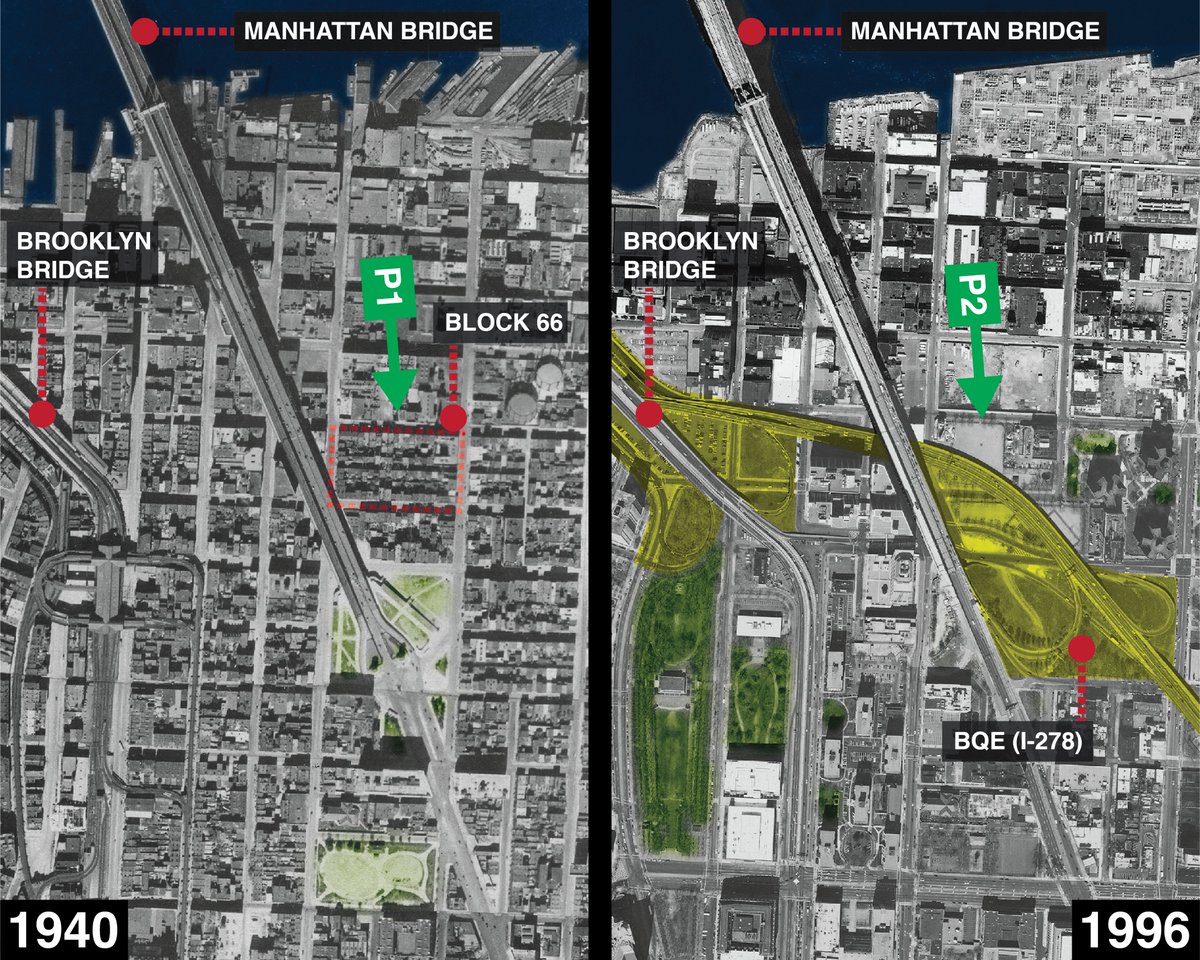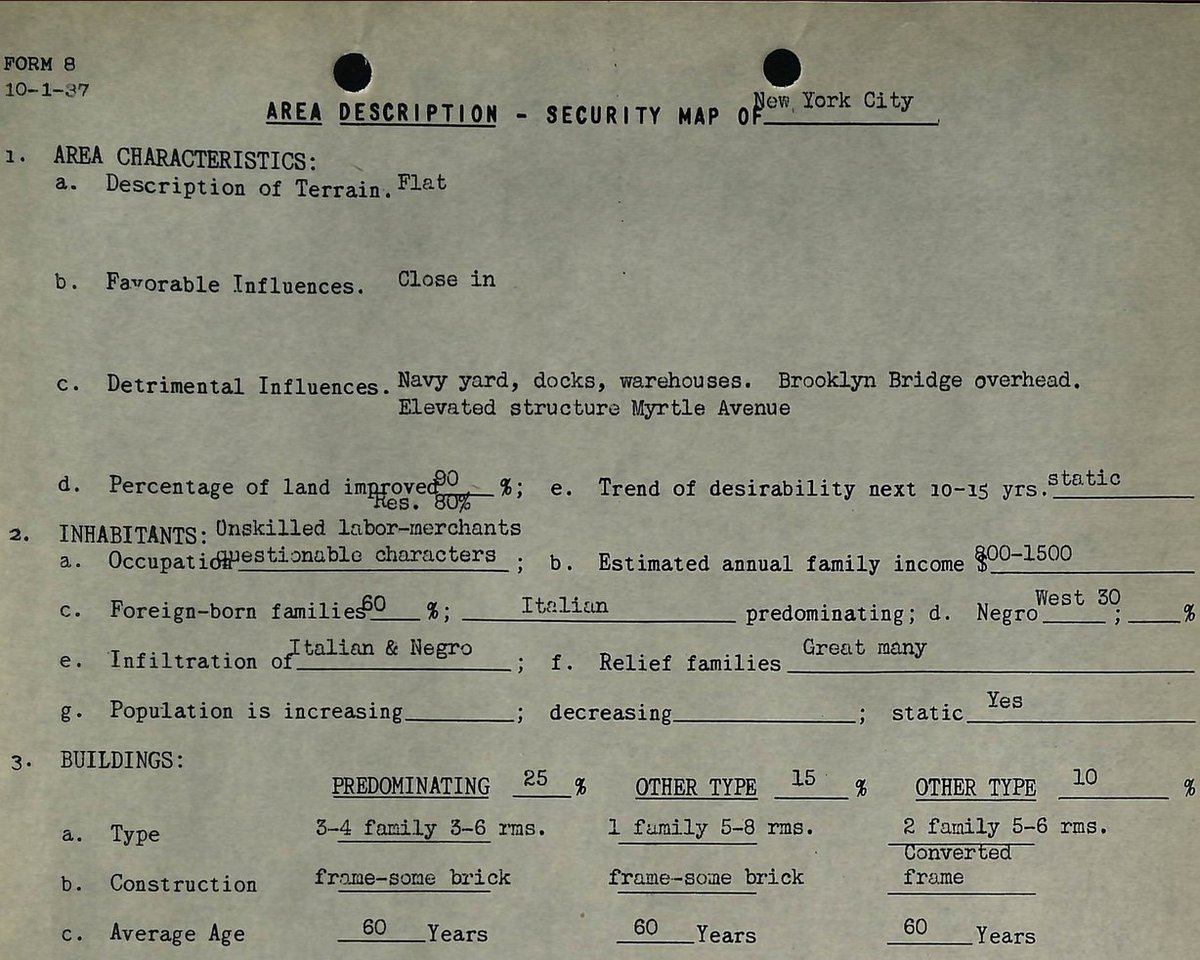The Mecca Flats in Bronzeville on the South Side of Chicago was demolished in 1952 by @illinoistech after evicting its hundreds of residents—nearly all of them middle-class, Black families. Bronzeville's prosperous Black population led to the nickname, "The Black Metropolis." 

The Mecca was one of thousands of residential buildings destroyed during federally-funded “urban renewal and slum clearance,” along with the thousands more destroyed for the nearby Dan Ryan Expressway. 

Despite a long campaign from residents against this early example of an “urban renewal” project, IIT ultimately succeeded in eliminating this building—as well as much of the surrounding neighborhood—for its campus expansion plans; designed by architect Mies van der Rohe. 
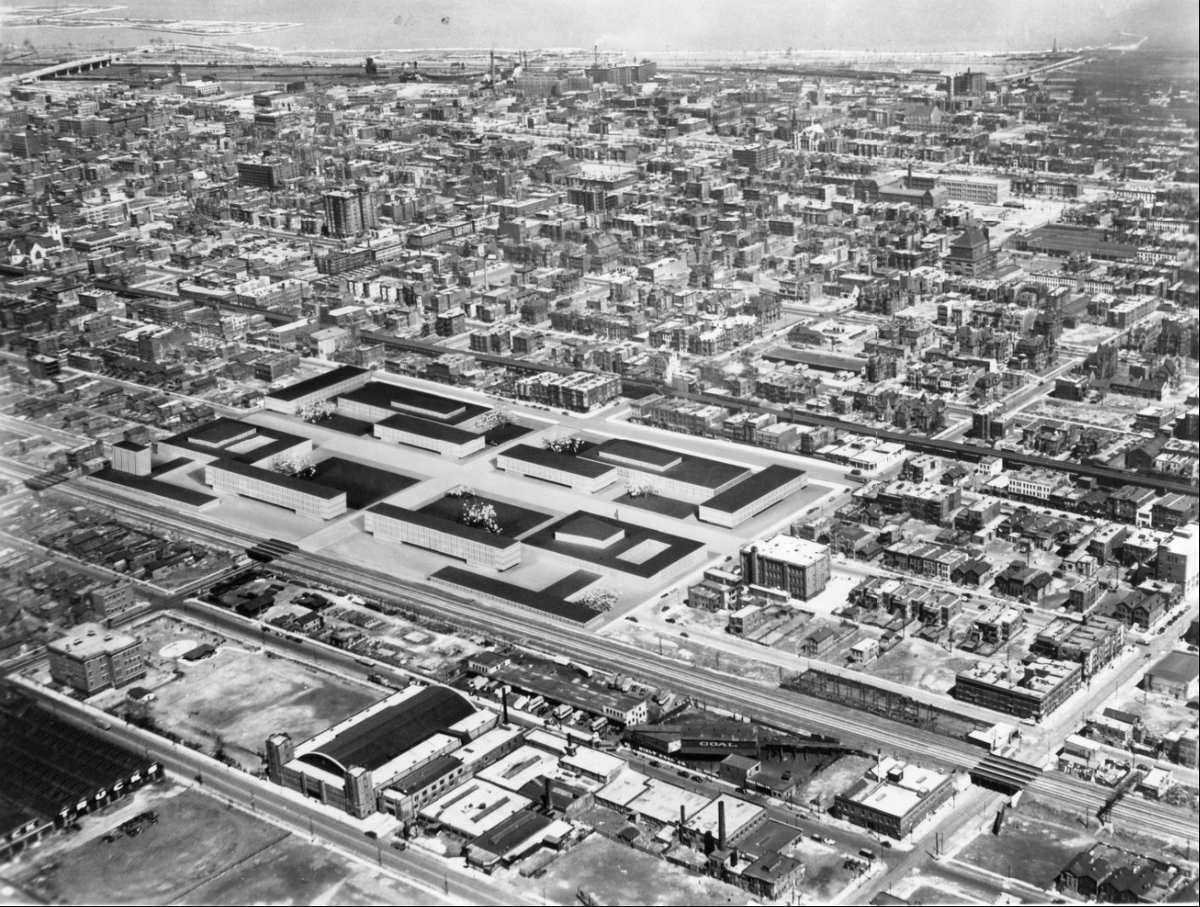
The tenants of the Mecca were typical of Bronzeville’s large and wealthy Black middle-class before “urban renewal.” After a long legal battle, they were ultimately unable to save their homes. 

Keith Elementary, a school across from the Mecca with students from across Bronzeville, was also enveloped by IIT. It was demolished in 1959. buildinghistory.iit.edu/buildings/keith 
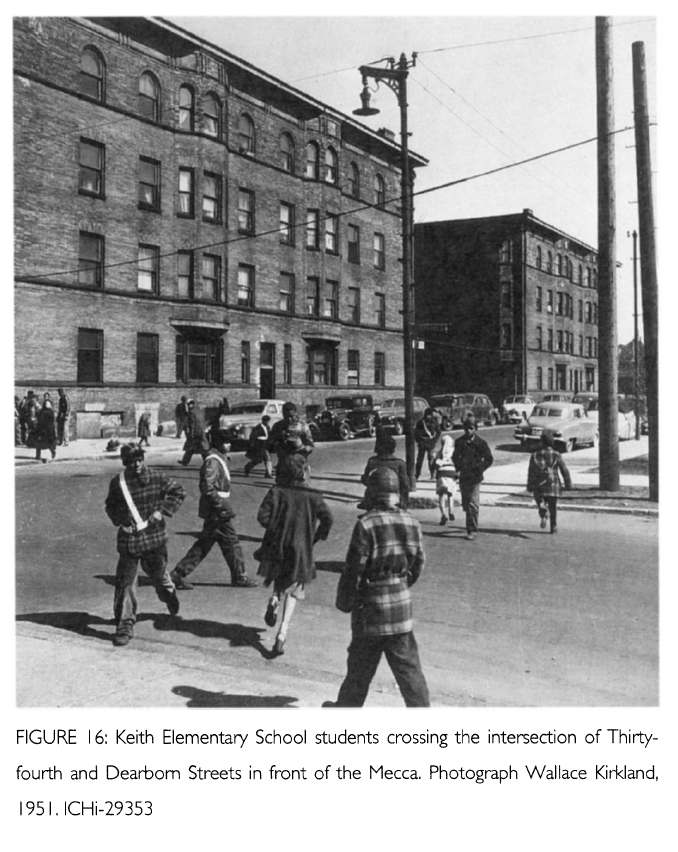
Mecca Flats itself was originally built as a hotel for visitors to the World’s Columbian Exposition in 1892 (the famed “White City”), easily accessible by L. The building had 96 units, each surrounding a large sky-lit open court with a fountain in the center and colorful tiling. 

Unfortunately, few photographs of the interior survive. Those that do are from shortly before demolition, by which point the building had already been allowed to deteriorate. 

In this image from 1951 the tile and fountain has already been removed. The building’s signature ironwork is still visible. The building would be demolished the next year. 

The Mecca was famous for its vibrant social life, partially owing to its large, open courtyards. Pulitzer Prize winning poet Gwendolyn Brooks wrote of her time working for a resident in her poem “In the Mecca,” and jazz composer Jimmy Blythe wrote the “Mecca Flat Blues.” 

Unfortunately little of the Mecca still exists, but recent excavation has unearthed some remnants in what has unfortunately become an archeological site. Today the site is home to Crown Hall, which IIT’s architecture school. Seen here is some of the original tiling uncovered. 
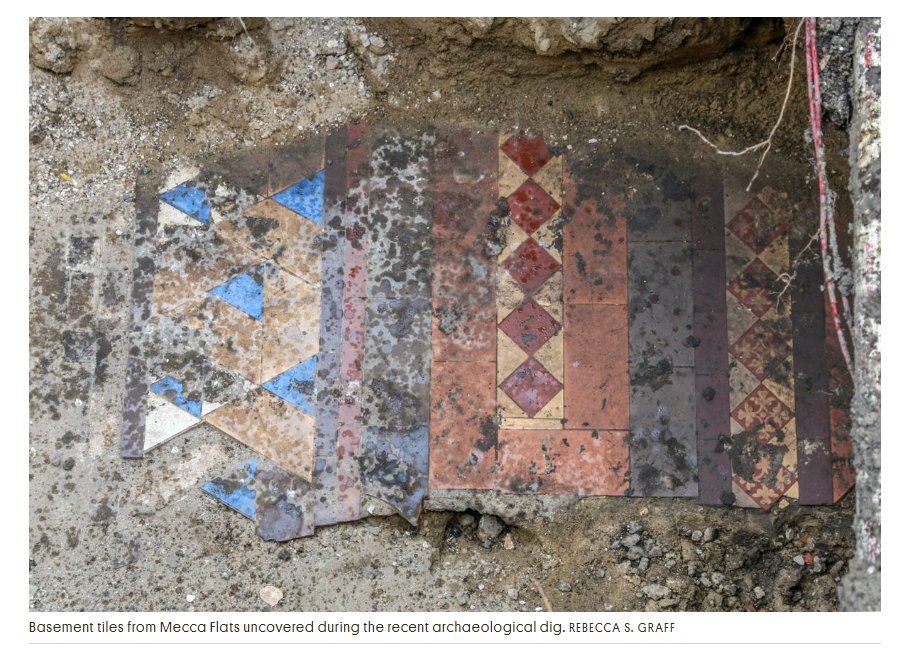
More info on Mecca Flats here: atlasobscura.com/articles/histo…
More info on Bronzeville here: segregationbydesign.com/chicago/bronze…
Source:
Chicago's Mecca Flat Blues
Author: Daniel Bluestone
Source: Journal of the Society of Architectural Historians , Dec., 1998, Vol. 57, No. 4
(Dec., 1998), pp. 382-403
Published by: University of California Press
Stable URL: jstor.org/stable/991458
Chicago's Mecca Flat Blues
Author: Daniel Bluestone
Source: Journal of the Society of Architectural Historians , Dec., 1998, Vol. 57, No. 4
(Dec., 1998), pp. 382-403
Published by: University of California Press
Stable URL: jstor.org/stable/991458
Here is the image without the tracing overlaid. The site of the Mecca today is occupied by IIT's Crown Hall (also designed by Mies), where @IITArchitecture is based. 



• • •
Missing some Tweet in this thread? You can try to
force a refresh







